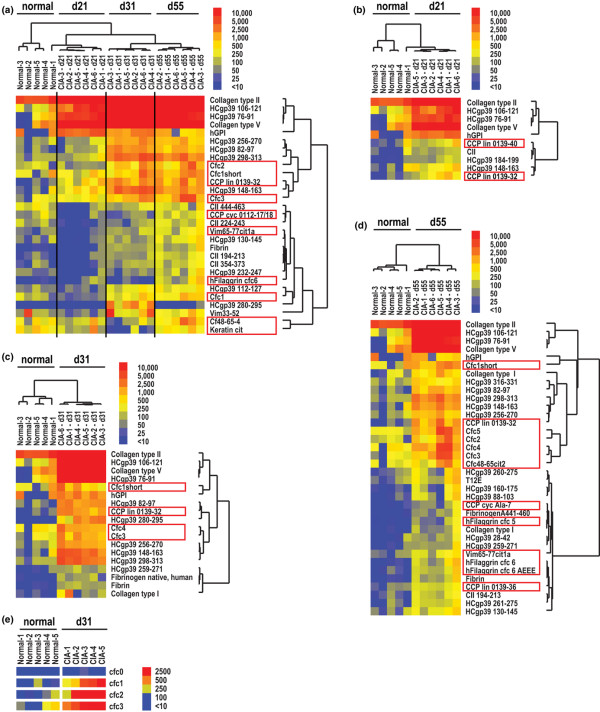Figure 2.
Synovial arrays demonstrate epitope spreading of autoantibodies targeting native and citrullinated molecules in collagen-induced arthritis (CIA). CIA was induced in DBA1/J mice using CII emulsified in complete Freund's adjuvant. The mice developed clinical CIA about one week after boosting (days 26 to 31). Serum was obtained on day 21, 31 and 55, representing pre-arthritis, early arthritis and late-stage arthritis, respectively. Significance Analysis of Microarrays (SAM) identified antigen features (displayed to the right of the images) with statistically significant differences in array reactivity, with citrullinated peptides and proteins denoted by red boxes. A hierarchical cluster algorithm based on a pairwise similarity function was used to order SAM-identified antigens and mice into relationships. The relationships are presented in tree-dendograms where branch lengths represent the degree of similarity between mice or antigen features. Blue represents lack of reactivity, yellow low and red positive reactivity. (a) Multiclass SAM followed by cluster analysis demonstrating statistical differences in antibody reactivity differences between healthy (normal) mice and mice induced for CIA at the pre-boost (day 21), early arthritis (day 31) and late-stage arthritis timepoints. Two-class SAM followed by cluster analysis presenting differences in antibody reactivity between healthy (normal) and mice immunised for CIA at the (b) pre-boost, (c) early arthritis and the (d) late stage arthritis timepoints. (e) Direct comparison of Cfc0, native filaggrin (306–324) epitope and variants of citrullinated filaggrin Cfc1-Cfc3.

